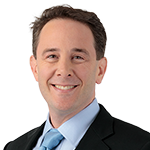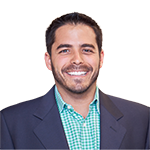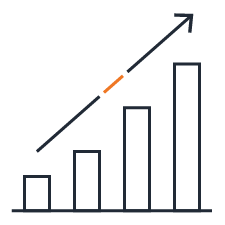HEALTHCARE
Investing in better outcomes
Healthcare is entering a golden age of innovation, with genetic sequencing and other advance technologies enabling a rapid pace of medical breakthroughs.
At the same time, demand for care is growing as populations age and unmet medical needs persist. These dynamics are creating sizable growth opportunities – with potentially positive outcomes for patients and investors alike.

The opportunity for investors:
The opportunities for investors:
A differentiated approach to healthcare investing
Janus Henderson's Healthcare Team seeks to invest in companies worldwide that are addressing high, unmet medical needs and providing efficient and cost-effective healthcare solutions. The healthcare sector, with its rapid growth and high complexity, offers opportunities for differentiated research. Understanding the science and the business behind new therapies and having a disciplined investment process are pillars of our approach.
Our funds are designed to:
Identify healthcare’s best scientific and commercial opportunities
Focus on small- and mid-cap biotech companies, aiming to maximize the sectors growth potential
Mitigate downside risk through a proprietary value-at-risk framework
Why invest in healthcare with Janus Henderson?
- Over 100 years experience
A dedicated team of 9 members with more than 100 years combined of healthcare investing experience - Sector experts
Our team of experts includes three PhDs and one MD. - A strong track record
Over the long term, a proven ability to navigate the gap between healthcare’s top- and bottom-performing stocks – historically, the widest of any sector – by staying focused on risk/reward. - A long-term approach
The quality of our investment team, the depth of our research, and our disciplined long-term approach set us apart in pursuing superior risk-adjusted returns in healthcare.
Past performance does not predict future returns. The value of an investment and the income from it may go down as well as up and you may lose the amount originally invested.
Exploring the science – and business – of biotech
The fund 'Janus Henderson Horizon Biotechnology Fund' seeks to capitalise on biotechnology’s rapid growth and innovation by focusing on companies the team believes can “change the practice of medicine.”
Meet the team
Portfolio management

Andy Acker, CFA
Portfolio Manager,
Global Life Sciences Strategy
(27 years of experience)
- Leads the firm's Health Care Sector Research Team
- Joined Janus in 1999 as a research analyst focused on biotechnology and pharmaceutical companies
- B.S. degree in biochemical sciences from Harvard University, graduating magna cum laude and Phi Beta Kappa
- MBA with honours from Harvard Business School

Daniel Lyons, PhD, CFA
Portfolio Manager,
Global Life Sciences Strategy
(23 years of experience)
- Joined Janus Henderson in 2000
- Focused on biotechnology and life science tools sectors
- PhD in immunology from Stanford and postdoctoral research with a Nobel laureate
- Bachelor’s degree in biochemistry and chemistry from Rice University, graduating magna cum laude

Agustin Mohedas, PhD
Portfolio Manager,
Biotechnology Strategy
(10 years of experience)
- Joined Janus Henderson in 2019
- Bachelor of science degree in biomedical engineering from Texas A&M University, graduating summa cum laude.
- PhD in medical engineering and medical physics from the Harvard-MIT Program in Health Sciences and Technology.
- His PhD research focused on drug development for a rare genetic disease, resulting in multiple patents and publications.

Andy Acker, CFA
Portfolio Manager, Global Life Sciences Strategy
(27 years of experience)
- Leads the firm's Health Care Sector Research Team
- Joined Janus in 1999 as a research analyst focused on biotechnology and pharmaceutical companies
- B.S. degree in biochemical sciences from Harvard University, graduating magna cum laude and Phi Beta Kappa
- MBA with honours from Harvard Business School

Daniel Lyons, PhD, CFA
Portfolio Manager, Global Life Sciences Strategy
(23 years of experience)
- Joined Janus Henderson in 2000
- Focused on biotechnology and life science tools sectors
- PhD in immunology from Stanford and postdoctoral research with a Nobel laureate
- Bachelor’s degree in biochemistry and chemistry from Rice University, graduating magna cum laude

Agustin Mohedas, PhD
Portfolio Manager, Biotechnology Strategy
(23 years of experience)
- Joined Janus Henderson in 2019
- Bachelor of science degree in biomedical engineering from Texas A&M University, graduating summa cum laude.
- PhD in medical engineering and medical physics from the Harvard-MIT Program in Health Sciences and Technology.
- His PhD research focused on drug development for a rare genetic disease, resulting in multiple patents and publications.
Broader healthcare team
Source: Janus Henderson Investors, as of 31 December 2022.
Note: Years of experience refer to financial industry experience. See individual biography pages for complete biographies.
Resources

Thematic Investing
Access transformational change with thematic investing. Thematic investing enables investors to benefit from the powerful megatrends that are disrupting and shaping the future, unlocking the potential for stronger and more consistent returns.
Footnotes
1 Food and Drug Administration (FDA), Janus Henderson, ISI Research. Data as of 31 December 2021. Blockbuster drug = > €900 million in annual sales.
2 BioSpace, “Minimally Invasive Surgery Market Size to Reach $23.4 billion by 2030,” 2 May 2022.
3 U.S. Census Bureau and Centers for Medicare & Medicaid Services. Spending data based on figures for 2014.
4 World Health Organization, “Ageing and health,” 1 October 2022.
5 Invest Europe, Q4 2021 PitchBook-NVCA Venture Monitor. Data as of 31 December 2021.
6 Janus Henderson Investors, FactSet. Data as of 31 December 2022.
Important information
Please read the following important information regarding this fund.




